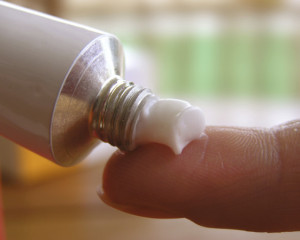Contributing Writer for Wake Up World
More effective than oral supplements in many situations, topical application of nutrients is often an overlooked (although superior) method of delivery. Whether using magnesium oil for debilitating arthritis, iodine to heal skin cancer or water soluble vitamins for general health, topical creams, gels, oils and sprays are one of the best ways to receive vitamins and minerals that are crucial for healthy well-being.
The Dilemma with Tablets and Pills
For those with a compromised digestive tract or failing health, metabolizing vitamins and minerals orally can be fraught with difficulties. Between digestive upset, poor utilization and the aggravation of yeast and bacterial issues in the gut, supplements taken internally can be problematic. An alternative lies with a transdermal mode of delivery.
As observed by Mark Sircus, Ac., OMD in the article, “The Principles and Practices of Transdermal Therapy”…
[pro_ad_display_adzone id=”110028″]
“Traditional methods of administering medicine such as tablets or capsules get watered down and become much less effective due to stomach acids and digestive enzymes, before they eventually get into the bloodstream. Bypassing the stomach and liver means a much greater percentage of the active ingredient goes straight into the bloodstream where it’s needed. In many cases, transdermal methods are used to help avoid potential side effects such as stomach upset or drowsiness.
“The full potential for transdermal medicine has not been explored by modern medicine though it has been practiced for thousands of years in hot springs around the world.”
Even when the system is strong, only 10 – 20 percent of standard oral vitamins and minerals are metabolized. However, these same nutrients have a much higher rate (up to 60 percent) when applied to the skin.
Enhanced Absorption with Topical Applications
Here are a few examples of successful transdermal nutrients:
Magnesium
Many have experienced digestive upset, loose stools and poor absorption when using magnesium internally. Magnesium oil sidesteps these issues completely. As an added benefit, it can be sprayed specifically on areas where inflammation and pain is troublesome, lending immediate and lasting relief. Alternatively, magnesium salts can be used in the bath to create a healing soak.
Vitamin D
Besides getting adequate sunlight, topical creams are an effective way to supplement with vitamin D. Due to its fat solubility, the oil rich emulsion is a perfect carrier for the nutrient.
Copper
Easily absorbed through the skin, copper is often used in natural beauty products as it refines, tones and smooths wrinkles. Utilizing a topical spray skirts the drawbacks of oral ingestion.
Vitamin C
As a potent antioxidant, vitamin C protects against sun damage and untimely aging. Transdermal absorption of the vitamin not only benefits the skin, but internal health too.
Iodine
A potent transdermal treatment for cancer. As noted by Sircus:
“Every tumour of the skin can be completely removed with Iodine Tincture 7%, brushed many times (10-20) a day. When the crust is formed, don’t take it away, but treat the area continuously and wait until it falls without any other intervention except the Iodine tincture. When the crust falls down the third time, the patient is healed” – according to Dr. Tullio Simoncini.
Vitamin and mineral blends are also available as topical sprays, supplying trace elements of zinc, iron, molybdenum, selenium, chromium, boron, iodine, manganese and vitamin B12. Applying this aqueous solution onto the skin several times a day is an effective method of delivery without any undesirable absorption issues.
Sources for this article include:
Previous articles by Carolanne:
- Common Toxin in Your Pantry Causes Obesity, Diabetes, Infertility… and Much More
- Hemp – The Ultimate Cash Crop, Health Food and Environmental Savior Rolled Into One
-
Europe Embraces Healthy Raw Dairy by Unveiling Fresh Milk Vending Machines
- Confirmed by Science: You Really Can Change Your DNA – Here’s How
-
Chemtrails: Learn How to Protect Yourself From These Treacherous Poisons
- Top 10 Food Frauds: Formaldehyde, Plastic, Melamine & Caustic Soda Found in Common Foods
- Autistic Boy With Higher IQ Than Einstein Discovers Gift After Removal From State-Run Therapy
-
Enhance Spiritual, Mental and Physical Well-being with a Pineal Gland Detox
- Enterprising Community Aims for Total Food Self-Sufficiency with Free Edible Landscapes
- The Silent Toxin in Food that Provokes Cancer, Diabetes, Multiple Sclerosis and More
[pro_ad_display_adzone id=”110025″]
[pro_ad_display_adzone id=”110027″]
Please note: this article was first published on Natural News.







